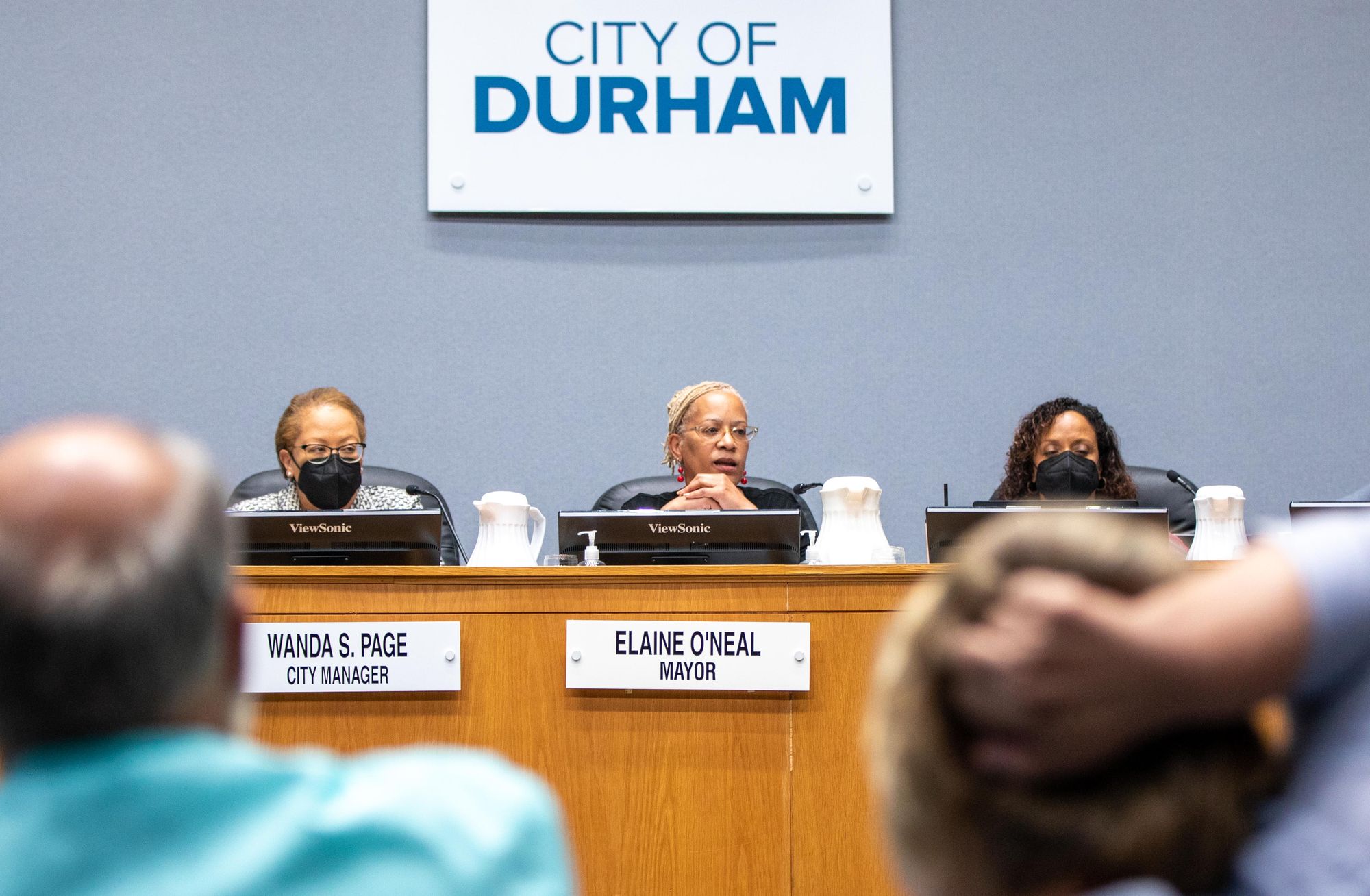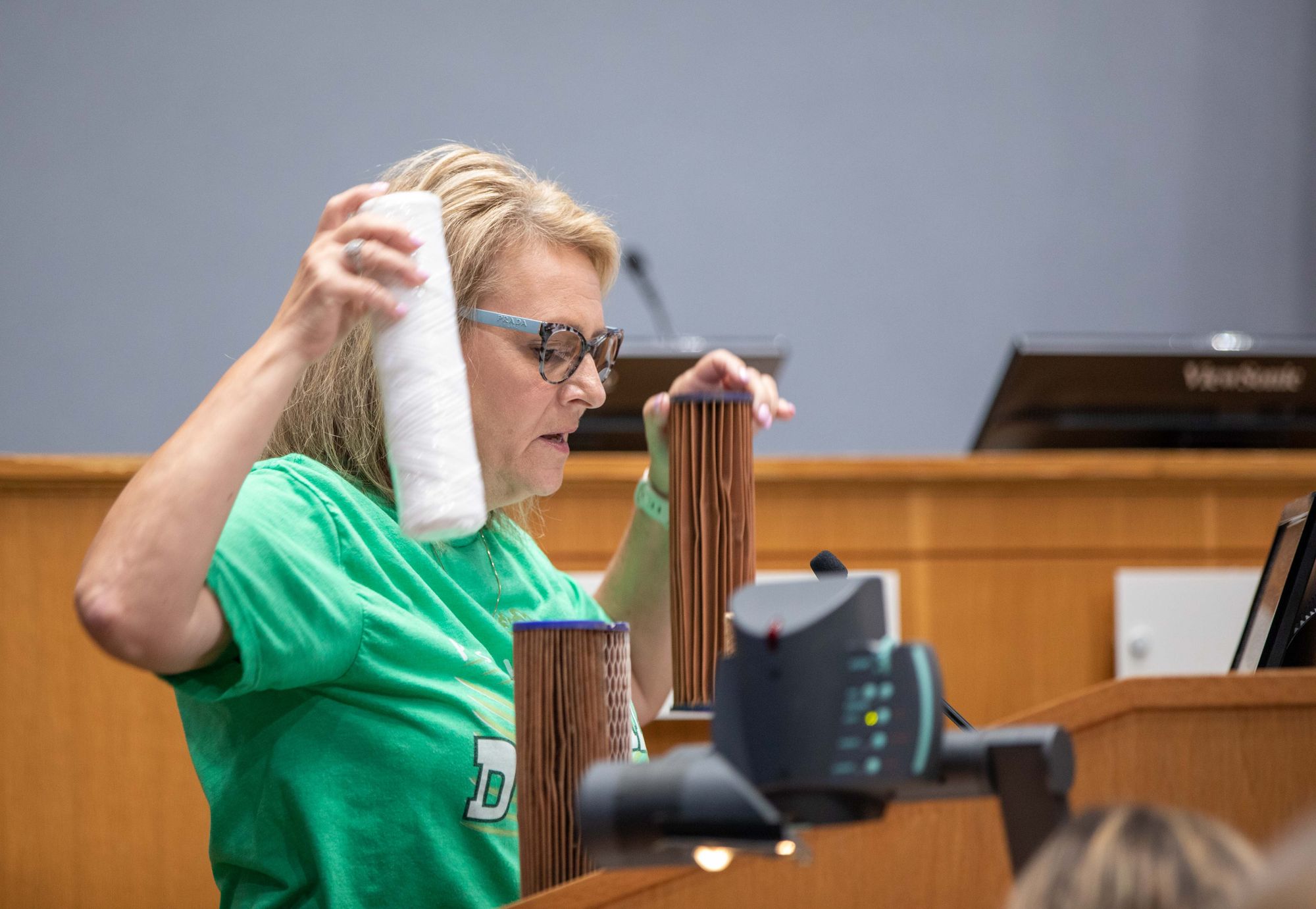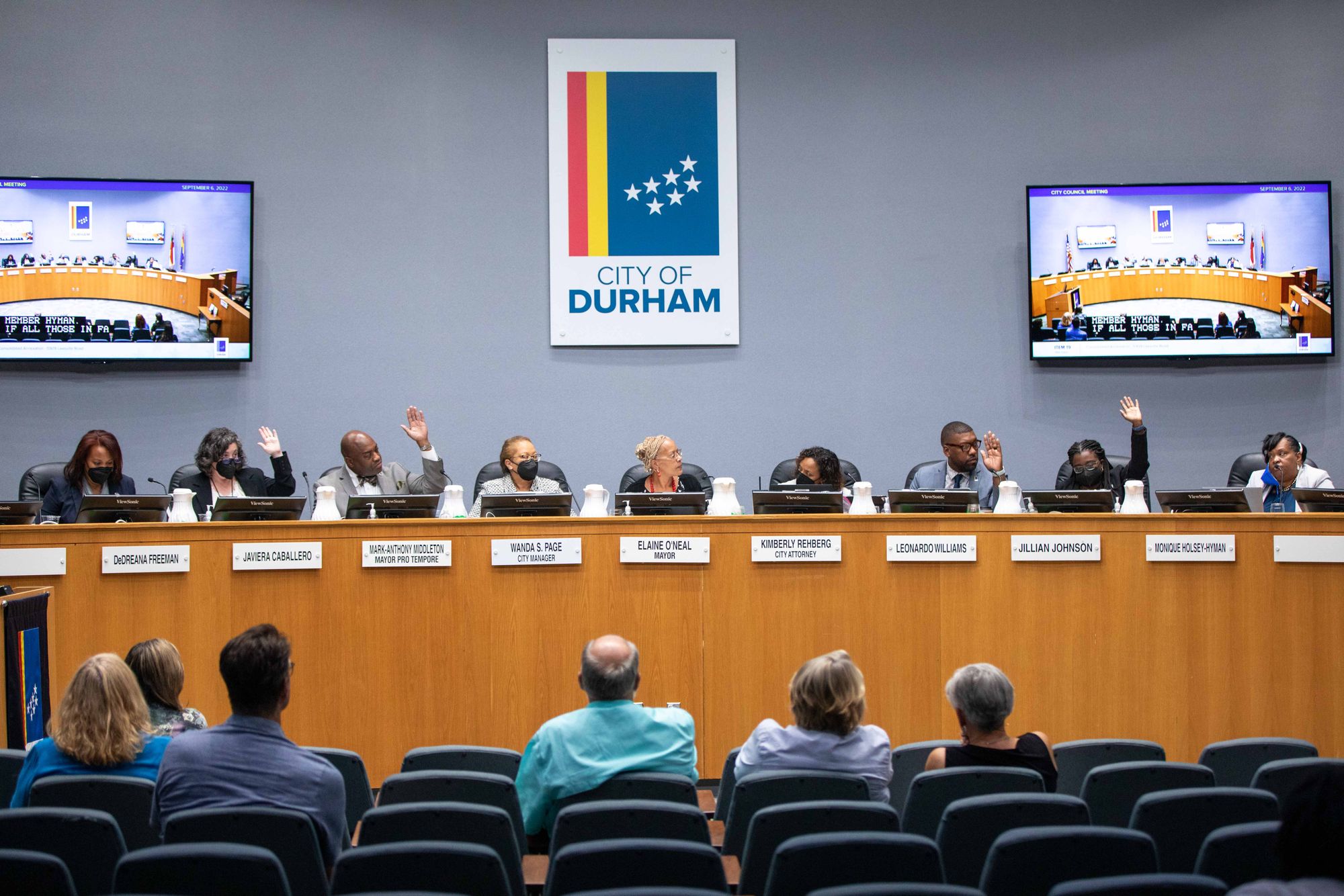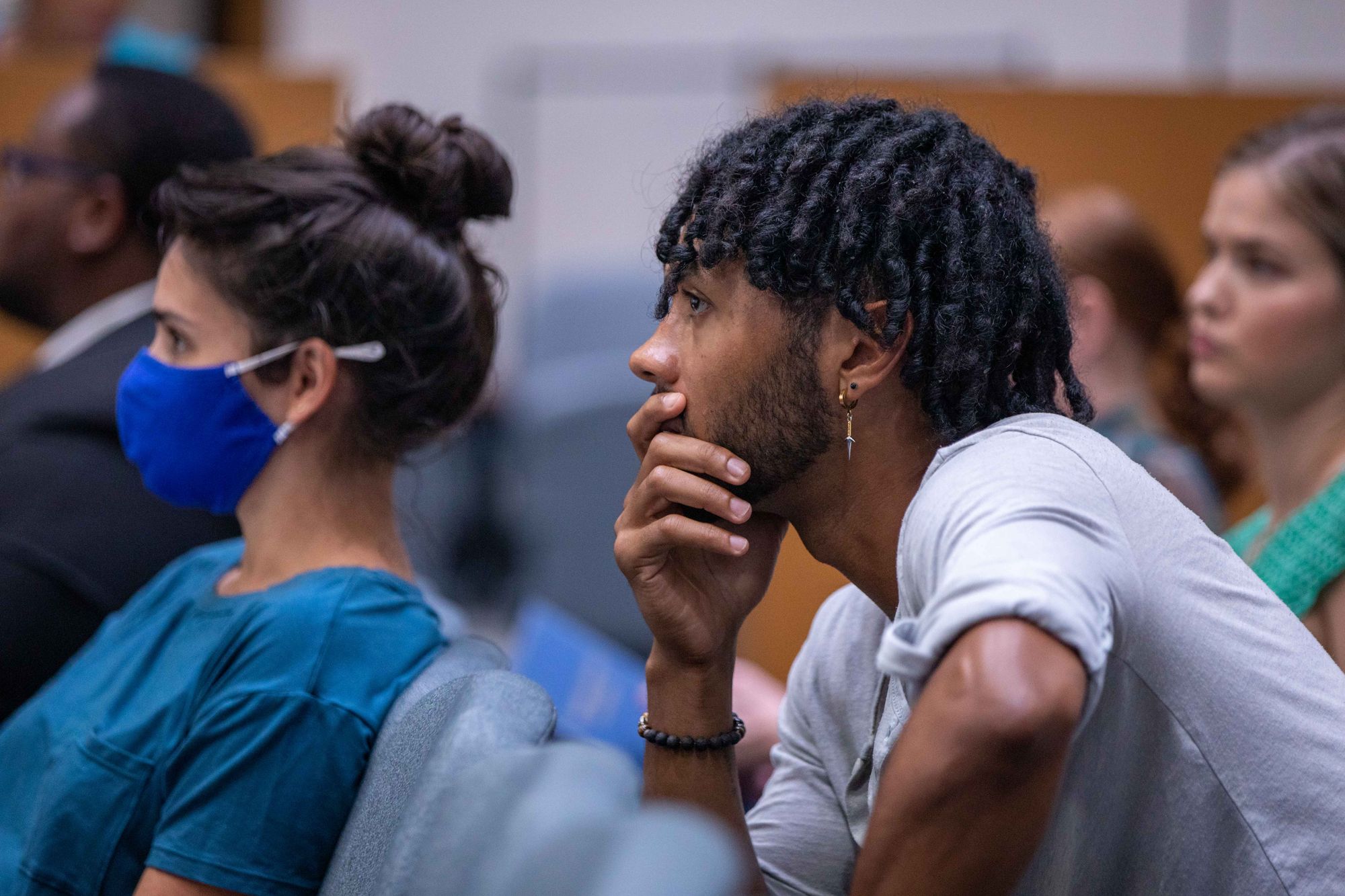By The Horns | September 7, 2022
Durham desperately needs more housing. But at what cost? The members of Preserve Rural Durham continue to wonder what the future holds for their community.

Welcome to the newest edition of By The Horns, a newsletter covering the Durham City Council. This series is intended to help guide those attempting to understand the mechanics of Durham city government, stay informed on issues throughout Durham, and learn the tools necessary to be a more engaged citizen.

The Meeting Agenda for September 6, 2022 can be found here.
The Fight to Preserve Rural Durham
The headlining agenda item was the annexation of land at 5909 and 6301 Leesville Road for a proposed development of up to 330 townhouse units. If you recall from the last council meeting, a similar development was proposed at 4903 Leesville Road. Members of Preserve Rural Durham stood in opposition of that development and the agenda item took nearly two hours to complete, ultimately failing to pass by a vote of 3-3.
Well, Preserve Rural Durham returned to City Hall on Tuesday night in an attempt to halt the 5909 Leesville Road development and hit their P.R. on “time spent discussing one agenda item.” Unfortunately for them, they only succeeded in the latter.
Much of what was discussed runs parallel to the previous Leesville Road proposal. Proponents see it as an opportunity to grow the neighborhood and meet Durham’s desperate need for housing. On the other side, detractors still hold firm that development in this area without careful consideration for the environment will cause harm to the families who live there. The “tomato soup” vials were replaced by dirty water filters, courtesy of Pamela Andrews, a member of Preserve Rural Durham, to highlight the damage already being done by construction in the neighborhood.

Each side, the proponents and opponents of the development, were given a total of 30 minutes to speak: 3 minutes for each participant. Because the opponents had 10 people, and the proponents only 8, the proponents were given the additional 6 minutes to divide amongst themselves. Two of the proponents, Rob Rudloff and Marie Farmer, refrained from speaking and instead gave their time to Tim Sivers, a landscape architect with Horvath Associates.
He did an admirable job illustrating how this particular development stands apart from others in the area: more tree coverage, open space, and “stream buffers” to prevent sediment run-off. In fact, the accommodations exceed what is required by city ordinance, which was pointed out by members of council towards the end of the discussion.
Affordable housing was also included in the proposed development. 3% of the units (approx. 9.9 of the 330) “will be committed as ‘income restricted dwelling units’” at below 80% AMI for the next 30 years. Sherye Sedlak, one of the speakers in opposition of the development, had this to say in response:
“9.9 homes scattered amongst 330 in a development that has no transportation services or any shopping, groceries, clothing or anything close by within Durham proper doesn’t provide affordable housing for people.” (1:55:30)
It’s important to remember that communities are not just a series of row houses. They require safety services, healthy food shops, schools, parks, and adequate transportation systems. During her closing statement, Councilperson Johnson said that urban sprawl was an issue many cities faced, but this project didn’t fit that narrative because of the presumed commute time into town for work.
Without those services, we’re adding 330 homes with single-occupancy vehicles driving back and forth from downtown to the outskirts of Durham which will surely add to congestion and pollution. But until the developments are completed, there’s little incentive to supply those services and amenities unless residents are clamoring for it. So which should come first: the services or the development? The answer is probably both simultaneously.
After nearly three hours of deliberation, the Council decided to move the project forward.
Each member voted the same as they did for the 4903 Leesville Road development. This time, Councilperson Johnson tipped the scales in favor of the developers after being absent from the last meeting.

East Geer Street Residential
Honestly, I think the council vote unanimously on this one just so they could get the hell outta the chamber. Everyone in the room was clearly spent after the Leesville Road marathon, myself included. But I want to at least bring the item to your attention because it is a more substantial affordable housing project being developed by a local group, represented by Leah Bergman and Dan Jewell at last night’s meeting.
In a Twitter exchange after the meeting, Councilperson Williams offered his perspective on how we need changes in the process to give more local developers a fair chance against national firms.
Well, that’s partially true. We do have smaller dev’s, including the one who spoke right after #Item19, who has been very successful. However, it should not be so tough for her to build in a way that solves our problems. That’s where the issue is; the process.
— Leonardo Williams (@LeoForDurham) September 7, 2022
Representation Matters
After both sides voiced their opinions, Councilperson Middleton said something that we were already investigating in the audience. “A conservationist is a person with a house in the woods and a developer is a person who wants one. Closing dates sometimes matter where you come down in this debate.”
Many of the proponents did not live in the neighborhood sited for the development. Kathleen Alexander, one of the speakers, owns property at the proposed site but now lives in Raleigh. Ronnie Reagan also claimed to own property in the area. Others who spoke talked about the importance of the project, but it makes you wonder why they would spend time addressing council for a project that has seemingly little connection to them or where they live currently. Most of the opponents live within a stones throw of the proposed project and are directly affected by changes in the landscape.
One of my co-conspirators at the meeting leaned over and said, “people will speak for you if you don’t show up to speak for yourself.” It’s a reminder that voting for council members is just the first step. If you want something, you have to show up for it. The folks at Preserve Rural Durham remain undeterred, regardless of the result at each meeting. Their level of civic engagement should be a model to all of us.
Civics 101
The Unified Development Ordinance, or UDO, is the rulebook for developing in Durham. Often, if a developer is speaking before City Council about a proposed site, they are asking for an amendment to the UDO which would change the zoning designation of the site. This provides members of the community with time and leverage to engage with the process, allowing them to ask the developers, as well as city council, for considerations on the project.
Northgate Mall is a great example. The developer recently made changes to the proposed plan, eliminating all residential units. Because of this change, the developer will need city council approval for the zoning change required for the new site plan. The Walltown neighborhood, which sits adjacent to the former mall, has been actively communicating their own ideas for the site based on the needs of local residents. Those concerns have also been voiced to city council who ultimately decide whether Northwood Retail, the current developer on the Northgate Mall redevelopment, will get the zoning they desire.
There’s more to unpack here regarding the UDO, but remember that, in many cases, developers need approval to build which is a window of opportunity for concerned citizens to have their voices heard.

Additional Items
Moments of Recognition
At the start of the meeting, a number of different projects, initiatives, and sportsball games were recognized:
- NCCU (my alma mater) football celebrated a decisive win over rival A&T. Tough luck, Mayor Pro Tempore.
- Welcoming Week (Sept. 12-16), hosted by Neighborhood Improvement Services, celebrates the “interconnectedness of our diverse communities.” Learn how you can get involved here.
- September is both National Recovery Month and Suicide Prevention Month. Durham resident Larry McGill, who spoke on behalf of the proclamation, has been on a 34-year recovery journey. A celebration will be held at Durham Central Park on September 16 from 5:30pm - 8:30pm.
- The Walltown community recently unveiled their new community sign in front of the Walltown Recreation Center on West Club Blvd.
- The council adopted a resolution to designate a section of Fayetteville Street as “Dr. Dock J. Jordan and Carrie Thomas Jordan Highway.” Members of the family were in attendance to speak on behalf of the commemoration.
A special thank you to Elliot Blumberg for joining me on Tuesday evening and taking the wonderful photos you’ve enjoyed in this post, including this one of yours truly deep in concentration.



